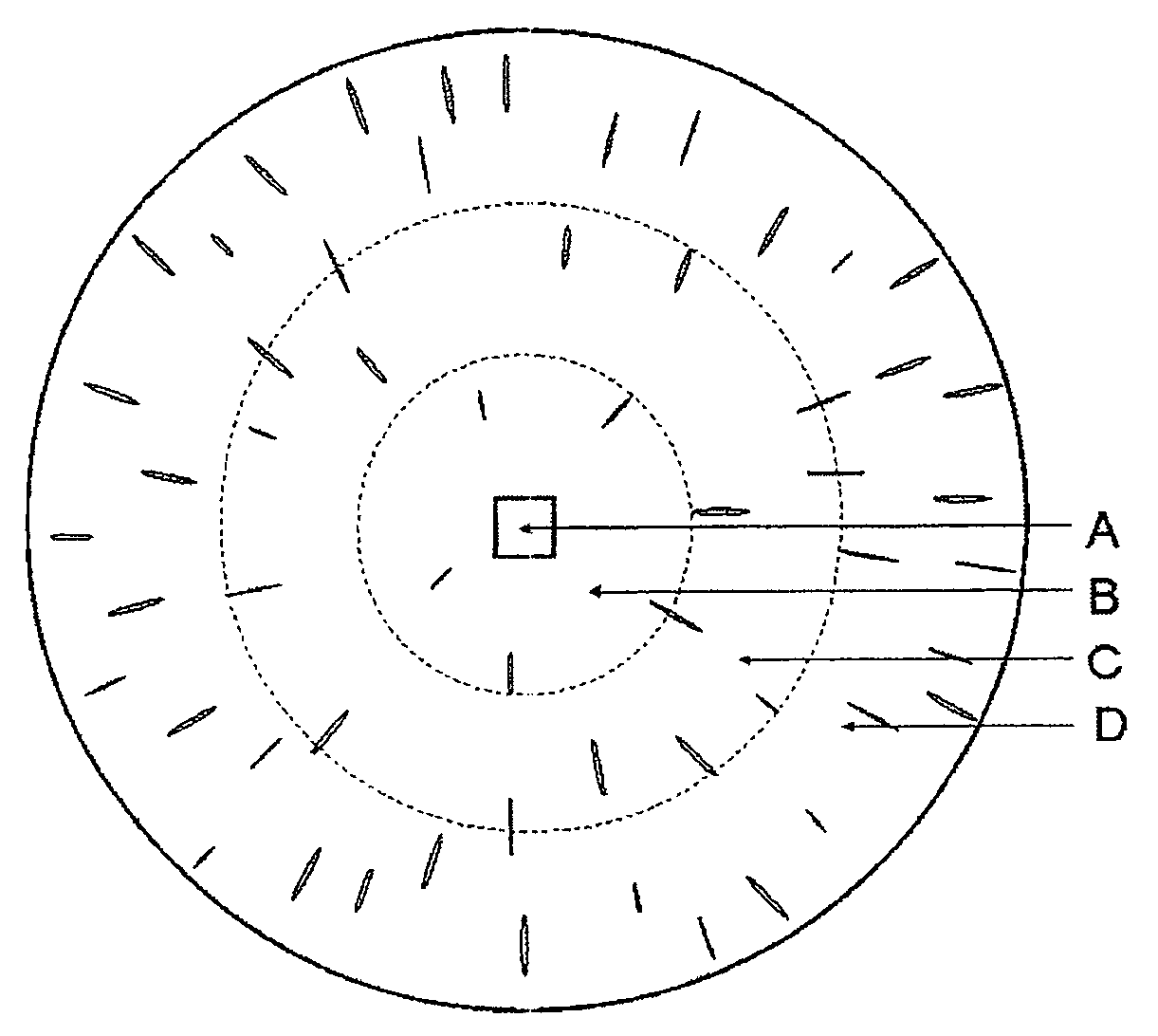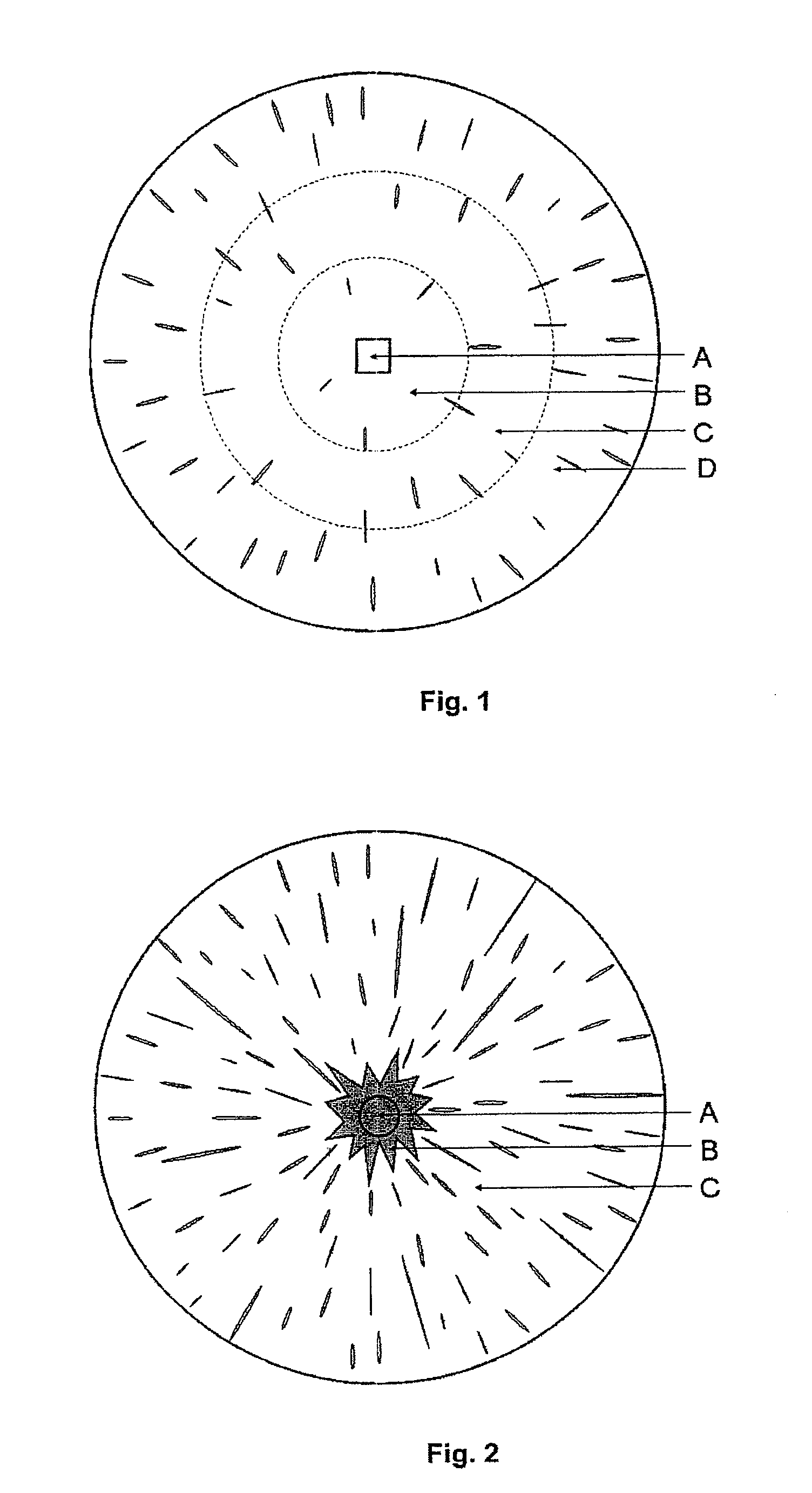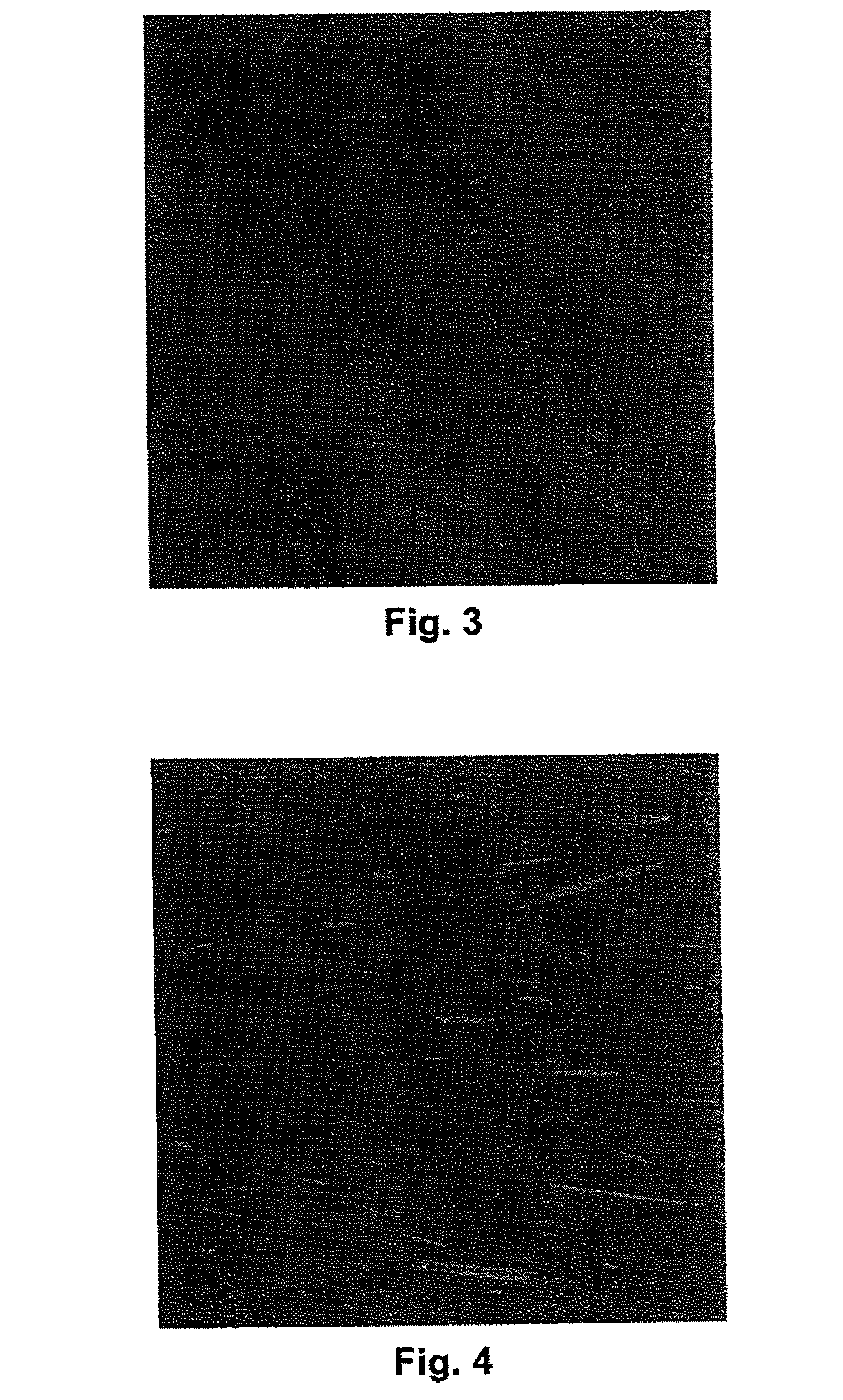Polycrystalline Silicon Rod For Zone Reflecting And A Process For The Production Thereof
a polycrystalline silicon and zone reflecting technology, applied in the direction of crystal growth process, synthetic resin layered products, record information storage, etc., can solve the problems of inability to use rods afflicted with cracks or high thermal strains, the yield of finished polycrystalline rods is significantly less than 100%, and the production cost of polycrystalline rods is reduced. , to achieve the effect of reducing the production cost of polycrystalline rods, high yield and cost saving
- Summary
- Abstract
- Description
- Claims
- Application Information
AI Technical Summary
Benefits of technology
Problems solved by technology
Method used
Image
Examples
example 4
[0060]The polycrystalline silicon rods described in this example were deposited according to the present invention. Trichlorosilane was used as silicon-containing component of the reaction gas. The polycrystalline Si thin rods (square cross section, edge length 8 mm) were used as carrier bodies. Firstly, the deposition was carried out at 1050° C. with a gas mixture having a TCS fraction of 20%. The deposition rate was 0.35 mm / h in this step, as also throughout the deposition time. After the rods had reached the diameter of 60 mm, the rod temperature was slowly lowered to 990° C. and at the same time the TCS fraction was increased to 40%. The change took place slowly (“fluidly”), such that it was completed only when the rod reached the diameter of 102 mm (after 60 hours). The deposition was then continued under these conditions until the rods reached the diameter of 150 mm. After removal from the reactor, the rods, having an average crack-free yield of 75% could be processed for the ...
PUM
| Property | Measurement | Unit |
|---|---|---|
| length | aaaaa | aaaaa |
| width | aaaaa | aaaaa |
| width | aaaaa | aaaaa |
Abstract
Description
Claims
Application Information
 Login to view more
Login to view more - R&D Engineer
- R&D Manager
- IP Professional
- Industry Leading Data Capabilities
- Powerful AI technology
- Patent DNA Extraction
Browse by: Latest US Patents, China's latest patents, Technical Efficacy Thesaurus, Application Domain, Technology Topic.
© 2024 PatSnap. All rights reserved.Legal|Privacy policy|Modern Slavery Act Transparency Statement|Sitemap



